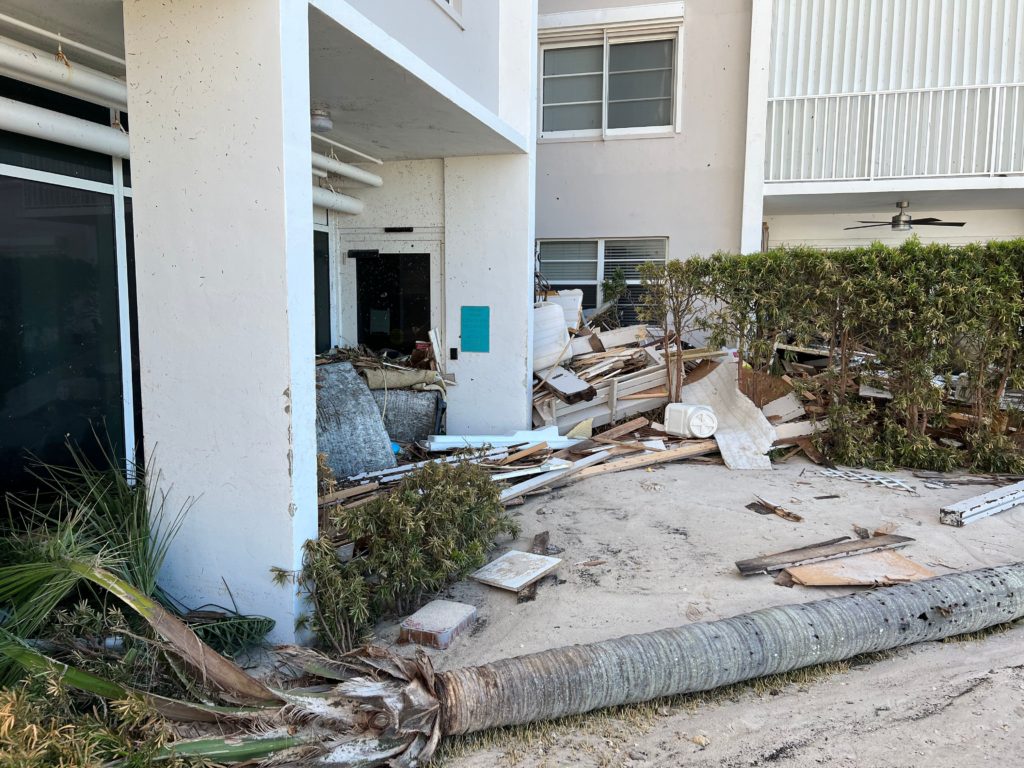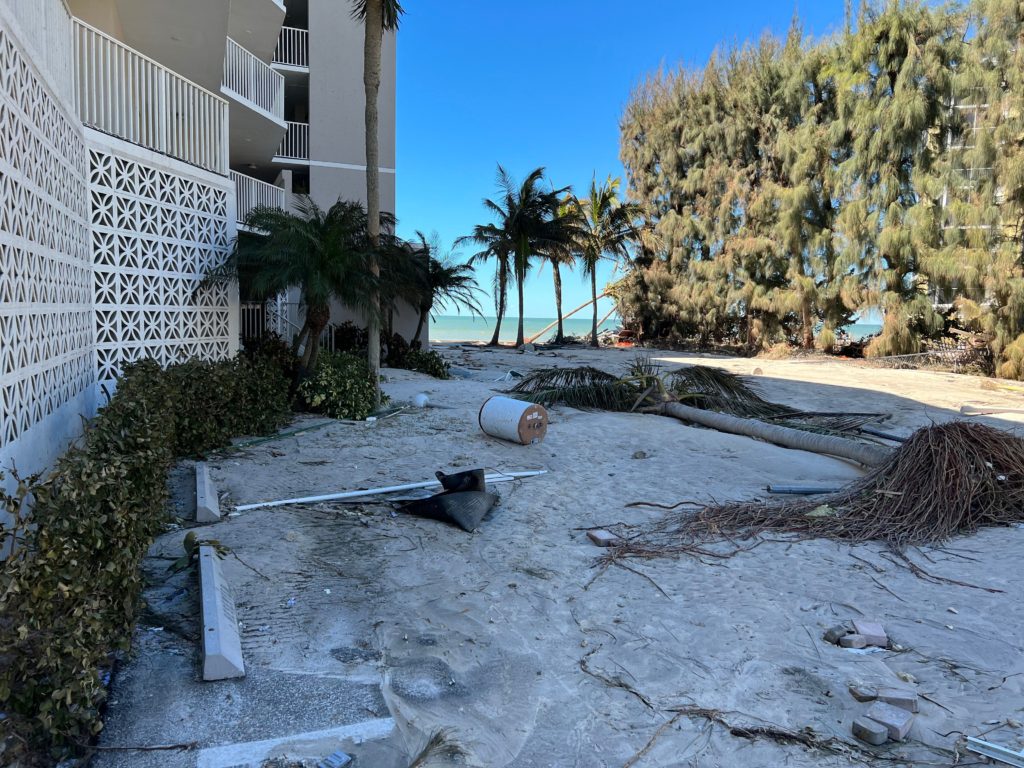Celebrate Independence Safely
Happy Fourth of July!
There’s no question, we all look forward to Fourth of July weekend! Fun, family, friends, fireworks, BBQ and usually near water. What’s not to look forward to? On the other hand, celebrating safely needs to stay in the back of our minds.

Firework Safety
Below are some tips on how to use and handle fireworks appropriately.
- Never allow young children to handle fireworks
- Do not handle while impaired by alcohol or drugs
- Never light them indoors
- Anyone using fireworks should use protective eyewear
- Do not light fireworks close to homes or buildings
- Do not re-light or handle malfunctioning fireworks
- Keep a hose or bucket of water nearby to fully extinguish fireworks that don’t go off or in the event of a fire
- Don’t try to ignite fireworks in a container
- Light one at a time
Sparklers Aren’t for Everyone
Sparklers, or mini fireworks, are found being used by young kids at parades, firework shows, at home or at festivals. They’re a lot more dangerous than most think.
According to the National Fire Protection Association, sparklers alone account for more than 25% of emergency visits for firework injuries. And on top of that, sparklers accounted for nearly half of the total estimated injuries for children under 5 years old. They can quickly ignite clothing or hair, and children have had severe burns from dropping sparklers on their feet. They can burn at about 2,000 degrees.
Some fun alternatives are confetti poppers, colorful streamers and glow sticks!
How to Celebrate Safely
The best idea: go to a nearby town or city that hosts a firework show, and let the professionals handle it! Sit back and enjoy. Here is a list of public fireworks in the following states:
New Hampshire: Fireworks across New Hampshire
Maine: Fireworks across Maine
Massachusetts: Fireworks across Massachusetts
Protecting Your Possessions
 A Guide to Protecting Possessions from Insurance Loss
A Guide to Protecting Possessions from Insurance Loss
The thought of losing cherished belongings in a fire, theft, or natural disaster is unsettling. Thankfully, insurance exists to provide financial relief in such situations. But navigating the complexities of insurance claims can be daunting. To ensure you’re adequately prepared for the unexpected, here’s a guide on protecting your possessions from insurance loss:
Understanding Your Coverage:
- Policy Types: Familiarize yourself with the different insurance policies available. Homeowners insurance covers your dwelling and its contents in case of fire, theft, vandalism, and certain weather events. Renters insurance protects your belongings within a rented space. Valuable article coverage (often an add-on) provides specialized protection for high-value items like jewelry or artwork.
- Coverage Limits: Each policy has coverage limits for different categories (electronics, furniture, etc.). These limits dictate the maximum amount the insurer will pay for a damaged or lost item. Review your policy limits and adjust them if necessary to reflect the value of your possessions.
- Deductible: This is the amount you pay out of pocket before the insurance coverage kicks in. Choosing a higher deductible lowers your premium but increases your initial financial burden when filing a claim.
Documentation is Key:
- Home Inventory: Create a detailed inventory of your possessions. This should include photos, receipts (if available), descriptions, and estimated values. Include items in storage units or basements. Regularly update your inventory to reflect new purchases or disposals. Consider using a smartphone app or online tool to streamline this process.
- Appraisals: For high-value items (jewelry, antiques, collectibles), obtain professional appraisals. Appraisals establish the fair market value of the item, crucial for proper compensation in case of a loss. Update appraisals periodically as the value of these items may fluctuate.
- Proof of Ownership: Keep receipts, purchase agreements, and certificates of authenticity for valuable items. These documents serve as concrete proof of ownership, vital during the claims process.
 Preventive Measures:
Preventive Measures:
- Security Systems: Invest in a reliable home security system with features like burglar alarms, fire alarms, and water leak detectors. Consider monitored systems for added peace of mind.
- Loss Prevention: Implement measures to minimize the risk of loss. Install deadbolts on doors, reinforce windows,and trim bushes around entry points to deter break-ins. Consider flood mitigation measures if you live in a flood-prone area.
- Safe Storage: Store valuables in a secure location like a fireproof safe. Back up important documents on an external hard drive and store it securely, preferably off-site.
Filing a Claim:
- Contact Immediately: Notify your insurance company promptly after discovering a loss. There’s usually a specific timeframe for filing a claim (typically 72 hours). Delaying notification can jeopardize your claim.
- Gather Documentation: Provide your insurance company with your policy information, photos of the damage, and your detailed home inventory. This expedites the claims process.
- Be Accurate and Honest: Be truthful when reporting the details of the loss. Exaggerating or fabricating details can lead to claim denial.
- Call Insurcomm: We will help familiarize you with the next steps in our process depending on what the claim is: fire, water or storm.
Additional Tips:
- Review Your Policy Regularly: Regularly revisit your insurance policy to ensure coverage limits remain adequate and reflect any changes in your possessions.
- Maintain Open Communication: Maintain open communication with your insurance adjuster throughout the claims process. Don’t hesitate to seek clarification if anything is unclear.
- Understand Depreciation: Be aware that some policies factor in depreciation (wear and tear) when calculating payouts. You may receive less than the original value of your belongings.
By understanding your insurance coverage, meticulously documenting your possessions, and taking preventive measures, you can significantly increase your chances of a smooth claims process and minimize financial hardship in the event of a loss. Remember, insurance is a safety net; taking these steps strengthens that net, ensuring your cherished possessions are well-protected.
Using Commercial Drying Desiccants for Water Removal
Commercial drying desiccants are used in a variety of ways to remove moisture from the air and protect products and materials from water damage. This plays an important role in the restoration industry. They are a key tool for property owners looking to remove water and control humidity efficiently and effectively in large-scale or challenging environments.
What are commercial drying desiccants?
A desiccant is a substance (see below) that absorbs moisture from the air. Commercial drying desiccants are designed specially for large-scale properties or industrial use. The different uses of drying desiccants are extremely effective in absorbing moisture from the air. When there’s water damage, this is ideal for drying materials.
Different Types of Desiccants:
There are three different types of commercial desiccants. When choosing one, it’s important to consider the specific needs of the application. Factors such as moisture level, the temperature, and the type of material being dried will all play a role in selecting the appropriate desiccant.
– Silica gel: This is a popular choice of general-purpose drying applications due to its high capacity for moisture absorption and its ability to be regenerated for reuse.
– Activated alumina: This type of desiccant is often used in high temperature applications or where a low dew point is needed.
– Molecular sieve: This is a highly selective desiccant that can remove moisture from a wide range of liquids and gasses.
The breakdown: How do they work?
Desiccants are basically tiny sponges. They act like magnets for moisture, removing excess water from the air creating a drier environment. They achieve this primarily through absorption.
How they are used in our industry:
When there is water damage, we use dehumidifiers that contain commercial drying desiccants. These types of dehumidifiers are especially effective in environments where it’s crucial to have low humidity. Traditional refrigerant dehumidifiers are less effective in colder climates or in larger spaces and this is where we’d use the commercial drying desiccants.
Key benefits:
Commercial drying desiccants offer a few key benefits over traditional methods of drying and dehumidification.
– Rapid moisture removal: They can remove moisture from the air much faster than conventional dehumidifiers, which rely on condensation to remove moisture.
– Prevention of mold and mildew: By reducing humidity, desiccants help prevent the growth of mold and mildew.
– Versatility: These can be used in a variety of settings from warehouses, to hospitals, laboratories, food processing plants and more.
– Energy Efficiency: The investment of a desiccant system may be more costly than a traditional dehumidifier, but they can be more energy efficient in the long run. This is because they remove moisture from the air at lower temperatures, which reduces the amount of energy required to operate the system. This is beneficial for larger scale or long term drying operations.
This system is an essential tool in the world of water damage. If you’re experiencing water damage at a large facility or think you may be dealing with a challenging climate, like high humidity, commercial drying desiccant systems are one of the more cost effective ways to mitigate damages. It’s our job to prevent further damages from happening, like mitigating mold or mildew risks and restoring the facility back to its normal condition. Insurcomm can ensure we will help you and make a significant difference in the efficiency and effectiveness of treating your water loss.
Jay Hawkins Joins National Sales Team
 Jay Hawkins
Jay Hawkins
National Commercial Accounts Manager
https://www.linkedin.com/in/jay-hawkins-8b21101/
With the start of the new year more amplified than last, comes Jay Hawkins. Jay’s addition to our team welcomes new relationships. His focus is with adjusters across the nation. He works with, assists and helps adjusters and executive adjusters in large loss scenarios.
Meet Jay
Jay lives in Frisco, TX. He has two children Braden (16) and Brynn (14). He enjoys watching them in their different sports. Braden, a junior, is a nationally ranked long snapper in high school football. His daughter, Brynn, a freshman, plays volleyball. When he’s not involved in his children’s sports, he also enjoys traveling, playing golf, exploring wine and learning all different areas of history.
Jay’s professional background includes 25 years as a national printing representative. Being in the restoration industry is his second career which he began seven years ago. He loves the ever changing locations and unique circumstances we encounter. Jay believes the industry creates the strongest relationships in all aspects both personal and professional.
He looks forward to being able to share his work nationally and to spread the Insurcomm brand and vision that Insurcomm has created in the North Eastern part of the country. He looks forward to maintaining the momentum we’ve built and that has been growing the past several years. Jay also looks forward to creating new opportunities and keeping the integrity of the Insurcomm brand.
Fun fact, Jay has lived on 3 continents: Africa, Asia, and of course North America!
What food could you eat every day without getting tired of it?
Pizza!! All styles.
What is your favorite movie or TV show?
Shawshank Redemption!
Tabitha Wilson Joins National Sales Team

Tabitha Wilson
National Commercial Accounts Manager
https://www.linkedin.com/in/twilson615/
It’s no question Insurcomm has been expanding our team and making our presence known throughout the nation. Over the last few years, we have had an amazing sales team making it happen. With the start of the new year more vigilant than last, comes Tabitha Wilson. An industry leading individual, join us from Tennessee as our National Sales Commercial Account Manager. Her duty is to help us grow and build new relationships throughout the country, make strong connections and take charge when a large losses occur.
Meet Tabitha
Tabitha is a resident of Nashville, Tennessee, though her roots trace back to a quaint town in North Alabama. Her journey has taken unexpected turns, leading her from pursuing a science degree at Chattanooga State to a rewarding career in sales and marketing.
Tabitha loves spending time with her beautiful littles, Weston (4) and Sloane (1). Tabitha describes her life as a happy blend of family and professional pursuits.
Her professional journey began in sales recruiting, gradually evolving into sales and account management. She discovered her passion for building relationships and connecting with people on the business side of things. Engaging with diverse individuals and industries fuels her enthusiasm for the ever-evolving world of sales and marketing.
When she’s not networking in sales, she enjoys traveling, spending quality time with loved ones, an occasional workout class, anything with animals (she has two rescue pups!), and continually expanding her horizons through reading and learning new skills.
What drew Tabitha to Insurcomm was not just its industry standing but the incredible work culture and sense of family that defines the company. Meeting the diverse and talented team assured us that she had found her professional home. She’s excited about the opportunity to contribute to the continued success of Insurcomm. And we are grateful to have her!
In her role, she plans to leverage her extensive network and relationships to spearhead the growth of the Healthcare and Hospitality verticals on a national level. Tabitha is eager to collaborate with the exceptional team at Insurcomm to achieve our collective goals.
What food could you eat every day without getting tired of it?
Anything sweet – I have the biggest sweet tooth.
What is your favorite movie or TV show?
“Father of the Bride” or “Sweet home Alabama” – anything that’s a feel good movie with a great soundtrack. I’m a sucker for movies with Van Moorison music
Got Gutters?
Got Gutters?
Time to clean them!
The leaves have fallen and we are gearing up for cold weather, and dare we say it… snow! Cleaning your gutters is crucial to keeping your home ‘healthy’.
Gutters and downspouts get clogged with debris throughout the year. This could be from leaves, twigs, or build up and it happens to everyone. When this happens, gutters essentially become useless and don’t do their job. The weight of the debris can cause them to sag against the fascia and often this is where we see water penetration into the structure. Our team has even seen cases where basements are wet simply due to the gutters being clogged. 
It is also recommended to check for leaks and holes. These can be sealed up by caulking the inside of the gutter. Small holes can be filled by gutter sealant and larger holes will probably require a patch.
Also, check your downspouts. Are they draining too close to your foundation? Downspouts need to extend several feet away from the house. If not, they’ll dump the water right into the basement.
We recommend cleaning your gutters and downspouts at least once a year after the leaves have fallen, or twice if you have a lot of trees surrounding your home. You can do it yourself or you can hire a local contractor.
 Different ways to clean your gutters include using a leaf blower, a pressure washer or by hand. This all depends on how often you’ve cleaned your gutters or the amount of debris. There could be dirt and grime or just leaves and twigs.
Different ways to clean your gutters include using a leaf blower, a pressure washer or by hand. This all depends on how often you’ve cleaned your gutters or the amount of debris. There could be dirt and grime or just leaves and twigs.
You’re not alone – cleaning out your gutters every year can seem tedious or insignificant. But that being said, it could prevent costly damage in the future. If you are sick of cleaning them, look into getting screens attached or leaf guards! There are plenty of options out there.
Hurricane Preparedness Month
Hurricane Preparedness Month
Did you know that September is Hurricane Preparedness Month? There’s several steps you can take to prepare your home or building. Hurricane season begins on May 15 in the North Pacific and on June 1 in the Atlantic and Caribbean, and ends on November 30. It is forecasted, and is being proven, to be a very busy season in 2023.
What’s the difference between hurricane “watch” and “warning”?
A hurricane watch is when hurricane conditions are possible in an area. This means there’s sustained winds of 74 mph or higher. Watches are announced by experts about 48 hours before they expect tropical storm force winds to start.
A hurricane warning is more serious. This means stronger hurricane force winds are expected. This warning is usually issued 36 hours before tropical storm force winds are expected. This hopefully gives people enough time to prepare for the storm.
How to Prepare in Advance
Make a plan:
- Copy emergency phone numbers and keep them on your refrigerator or near the phone, as well as program them into family cell phones.
- Have an emergency supply kit.
- Locate nearest shelter and different routes to get there.
- If you have a pet, identify shelters that are pet friendly.
Have emergency supplies on hand. You can’t predict what type of damage can happen around you. Power and water could be cut off, damage could be done to your car or roads could be flooded or blocked off.
A few things to prepare are:
- Emergency food and water supply.
- Emergency medicine supply.
- Power sources, like flashlights.
- Important documents, like medical documents, passports, personal IDs, and wills.
How to Prepare if You Hear “Hurricane Watch” or “Hurricane Warning”
There are several things you need to get ready in this case. Your transportation, family and pets, home and evacuation plan if necessary.
Car:
- Fill your gas tank
- If possible, move vehicles undercover
- Keep emergency kit in vehicle
Family and pets:
- Get your prepared emergency plan and go over it together.
- Listen to the news, radio or continue to check for updates regarding the storm.
- Put pets and farm animals in a safe place.
Home:
- Clear your yard removing items that could blow around during a storm. Things like lawn and patio furniture, grills, bikes or toys.
- Use storm shutters to cover up windows and doors. If you don’t have these, nail pieces of plywood instead.
- Prepare to turn off your power. This is necessary if there is flooding, downed power lines or if you have to leave.
- Get drinking water readily available.
- Check the batteries in your carbon monoxide detector.
Evacuating or Staying Home?
Don’t ignore orders to evacuate. No matter how new, sturdy or well built your home or building may be, you never know what type of force a hurricane could bring. On the other hand, you could be ordered to stay home if driving conditions are too dangerous.
Have an open mind, plan and readiness for either situation.
Visit our website to view the active hurricane tracker.
Disaster Relief
How it Started
In 2020 we traveled to Louisiana to do our first disaster relief job. We responded to Hurricane Laura (Category 4), which damaged the state with an 18 foot storm surge. As it was our first experience with disaster relief, we partnered with several restoration and mitigation companies to complete the work. Shortly after, in early 2021, Texas had a historical winter event where the whole state experienced freezing cold temperatures for a record breaking nine day stretch. Texas is where we realized national large loss disaster relief is something we want to move forward with and pursue as we saw the need for help in our travels.

CORE
A few short months later, we became connected with CORE, by becoming a CORE Elite Member. Joining CORE gave us access to a whole new level of capabilities. We now are able to partner with like minded companies nationally to complete the jobs at hand. This relationship allowed us to perform disaster relief more efficiently, as there are 44 Elite members nationwide. This gives us, and them, access to more manpower, equipment, and knowledge.
Since becoming members, we have done disaster relief work in Florida from Hurricane Ian, Louisiana, New York, Missouri, Ohio, Texas and most recently the flash flooding in Vermont.

Today
We are so grateful to not only be serving Maine, New Hampshire and Massachusetts, but now the entire country. That being said, we have a wonderful new Large Loss Team that works with us to build relationships, attend events around the country and work together to get the jobs done more efficiently. Currently, our team consists of Corey and Lindsey Brandon (Kentucky), Will Matthews (South Carolina), Tony Rillieux (Mississippi), Mike Walker (Mississippi) and a large loss team of project managers and mitigation technicians based in Portsmouth, NH that travel to help facilitate and run the jobs.
To learn more about CORE, visit their website https://gowithcore.com/core-values/. To report a disaster relief claim, visit Insurcomm’s Major Disasters page.
July Vermont Flooding
Vermont Floods
On July 14, 2023 we were dispatched to Barre and Montpelier, Vermont to assess the damage caused by the floods that occurred a few days prior. We were humbled by the devastation that we witnessed and saddened by the damage that occurred to the local businesses and homes.
Within 24 hours we had our crews working on debris clean-up and further demolition. We are fortunate to collaborate with some of our likeminded partners from various restoration companies throughout the country. This is due to our relationships through CORE as CORE Elite Members. Partnering with them allows us to have the manpower, equipment and knowledge to get work started and completed.
Nearly four weeks later, two National Project Managers, 18 mitigation technicians, our administrative/support staff, and 124 laborers, we are still working countless hours to get things back to “normal”.
That being said, catastrophic events like this take a toll on a community and it may be a while before things get back to normal. We are thankful for the adjusters and property owners who have given us the opportunity to be a part of this process. We are blessed to have a hard-working team and the resources to provide these kinds of services.

